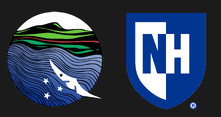Program Delivery Sites
Regular delivery sites for the program include:
Opoutere -The Wharekawa estuary, the beach and the sand spit are an important part of the coastline of the Coromandel Peninsula. It is one of the few coastal areas left on the Coromandel Peninsula where residential development has occurred only at low levels. The estuarine wetland is characterised by diverse plant communities and provides critical habitat for several species. The threatened New Zealand dotterel (Charadrius obscuris), as well as the variable oystercatcher (Haematopus unicolor), breed on the sand spit.
Leigh - The Cape Rodney-Okakari Point Marine Reserve was the first marine reserve to be established in New Zealand. It encompasses 547 ha of coastline and sea. Establishment of this reserve has helped in the return of commercial fish species and allowed thousands of visitors to view them in their natural habitat. Students carry out snorkel surveys, they learn about the community dynamics in the sub-tidal zone and about the political aspects of Marine Reserves.
Poor Knights - The Poor Knights Islands are 24 km north-east off the coast of Northland. The islands are home to a number of endemic species. Landing on these islands is strictly prohibited, but the area around these islands is a marine reserve, and world-renowned diving area. Although we do not dive as part of our programs, students do get the opportunity to snorkel at both Leigh and the Poor Knights (weather permitting).
Kaikōura - While at Kaikōura, we focus on ecotourism and the impact of tourism on small communities. A subtropical convergence and upwellings of cold, nutrient-rich water support a large variety of marine mammals and pelagic birds. Dusky dolphins (Lagenorhynchus obscuris), fur seals (Arctocephalus forsteri) and several species of whales are commonly found offshore of Kaikōura. The tourism industry in Kaikōura is built on these resources. EcoQuest has a strong relationship with Kāti Kuri and there are a number of local initiatives to which we have contributed over the years.
Craigieburn - At Craigieburn we study aspects of alpine ecology and relate these to climate change. Ecology of southern beech forests, ecotourism and the role of environmental education are a strong focus of our curriculum here. We stay at the Environmental Education Centre of New Zealand, in Craigieburn Conservation Park. The park comprises several mountain ranges. The park has a 50-year history of scientific research, including plant and animal ecology, disturbance regimes in beech forests, and soil science.
Nelson Lakes - Our focus here is on restoration ecology, Mainland Islands and adaptive management. The Department of Conservation (DoC), supported by the local community, manages the Rotoiti Nature Recovery Project. This one of several DoC mainland islands managed by DoC in New Zealand. An intricate matrix of pest and predator control has allowed native species to re-establish and flourish in the park. In Nelson the Brook Waimārama Sanctuary is the largest fenced haven for endangered plants and creatures in the South Island. This is a community restoration project.

